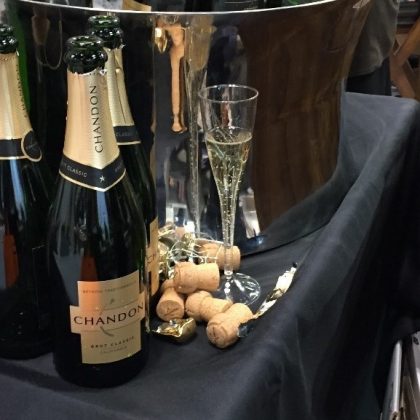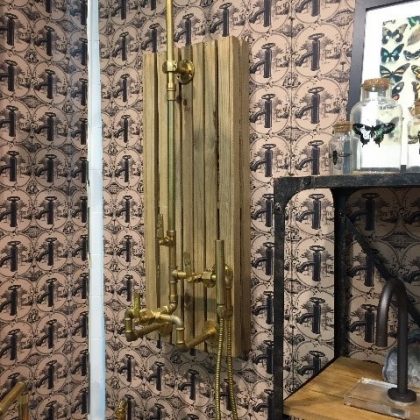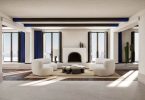Despite a relative slowdown in the global economy, boutique hotels appear to be outperforming competing corporate chains. New investors as well as established hotel operators are stepping into this space. Changes in the habits and interests of the traveler suggest that consumers are becoming more aware of design, expect a higher level of service and are looking for an “experience” rather than just a place to sleep and take a shower. The guest wants to be recognized and engaged in the hotel experience and boutique properties are rising to the challenge.
Define Boutique
Boutique hotels are expected to be small (less than 100 rooms). This size appears to allow management and staff to enhance the quality of service and customize and/or alter outlets based on changing needs/wants of the guest. Independent boutique hotel owners may not have to follow brand standards and can focus on the preferences of each visitor. They are also able to convert an existing building into a design-focused property that welcomes variances in floor levels and layouts rather than conform to minimum room sizes and specific standards imposed by major brands.
HVS Research has developed a lexicon of words to describe a Boutique property that includes: Unique, Trendy, Hip & Cool, Intimate, Design Oriented, High-tech, Personalized Service, Exclusive, Experiential, Aspirational and Inspiring.
At the Show
Addressing the global trend for unique experiences in hotel accommodations the Boutique Design Show held at NYC’s Javits Convention Center introduced furniture, fixtures, floor and window treatments that are likely to delete boring and replace the same/same experience in commercialized hotel suites with an ambiance that will be experiential and memorable.
Grab Attention
Exhibitors are expanding their budgets to entice attendees to visit their booths and to engage in conversation about their products. Instead of chocolates and retractable pens, savvy manufacturers lure weary show visitors into their space by offering a glass of champagne and a comfortable chair. No matter how busy you are or how you want to get through the show to get home, the lure of a chilled glass of bubbly and a seat (accompanied by a sales pitch), is a very acceptable marketing strategy. I wish that more vendors would follow this example.

Floor Treatments
While guests may not consciously appraise the floor coverings when then enter a hotel lobby, trudge down the corridors in search of their room, or marvel at the luxury that covers the floors in their rooms, the reality is that a large amount of capital (time and money) goes into selecting the right carpets and rugs that create the ambiance in a hotel room and public spaces.

Maria Scott, Director of Design, Shaw Hospitality Group
Shaw Hospitality Group is a Georgia based organization that designs floor coverings for the hospitality industry. Shaw products are used for standard to custom carpets, hard surface coverings, modular carpet tiles and cushions and are found in guest rooms and public areas. The company was named Best Flooring at the Hospitality Design Expo 2014 for the Design Journey Cloth and Stone collections and Best of Competition and Best Flooring at Hospitality Design Expo 2013 for its Be Bold Collection.
Leading the design team at Shaw is Maria Scott, a graduate of the University of Georgia with a major in Interiors, Textiles and Furnishings. With a 20-year history with Shaw, Scott has been involved with market research and product development in the flooring industry and has developed product lines for residential, corporate, healthcare, education, retail and the hospitality industries. Her current mission is to lead her team to the development of cutting-edge flooring products in the multiple market segments of the hospitality industry domestically and internationally.
Shaw finds that hotels have unique challenges: products must be easy to maintain, retain their integrity in the face of heavy traffic, be attractive to multiple consumer markets, add to the ambiance of the hotel in private and public spaces and be attractive over a period of years.
Interior designers are finding that a mix of floor coverings adds to the appeal of accommodations and many have selected to use an array of materials that includes standard broadloom, carpet tile and resilient that are available in squares, plank and hexagon patterns. Some properties focus on hard surfaces and use custom rugs from carpet tile or broadloom patterns that add design and color to the space.
According to Scott, broadloom remains the preferred flooring for guest rooms, hallways and certain public areas. There is broadloom preference because it is seen as a luxury design element. There is also a trend to recycle materials more efficiently. Consumers want to know what is in the products they use and manufacturers are looking at sustainability components in their offerings. Carpet tiles are gaining in popularity as they are esthetically pleasing, easy to maintain and to store.
Scott believes that in the next few years there is likely to be more sophisticated and luxurious floor coverings that will be developed from “compelling stories.” The designs will be inspirational and relevant to a time and place.


As a global corporation, Shaw produces floor coverings for international hotel organizations. Floor covering designs are culturally specific and patterns, fabrics and colors will change based on the part of the world the hotel is located.

Have You Covered
Another organization looking to take the boring out of floor coverings is Sacco. This company was started in 2001 by Marc Sacco who works directly with architects and designers who use sustainable resources and techniques for their domestic and international clients.


When you walk into many of the New York City hotels, look down (instead of up or straight ahead) and you will find Sacco on the floor. Properties include: Beekman Tower, Carlyle Hotel, Dream Hotel, Fitzpatrick Hotel, Ritz Carlton (Battery Park), Smyth Hotel and the Sanctuary.

Bathroom Time Improved
The average amount of time people spend in the bathroom each day is about 30 minutes; however, one in four spend more than one hour and women spend more than an hour (37% for women, 15% for men). Fifty-one percent spend 10 minutes or less in the shower while 49% take more than 10 minutes. Women are more likely to take longer showers than men; however, the older the person the shorter the shower. People with children take longer showers than those without.
The average person spends 1-4 years of their lives on the toilet and more time in the bathroom – if we factor in showers, baths and personal grooming. Because such a large chunk of our daily lives are spent surrounded by plumbing, it should receive a great deal more attention than it does.
So many hotel bathrooms have standard plumbing fixtures on the sinks and showers – so the time spent in the bathroom space can be incredibly dull and boring; however, the experience can be enhanced with imaginative and functional plumbing fixtures, thanks to the creative team at Waterworks – a Brooklyn, NY based organization.




Samuel Grogins started Waterworks in 1925 as a plumbing supply service company in Danbury, CT. In 1978, daughter Barbara and her husband Robert Sallick, decided to expand the business and it has resulted in revolutionizing the task of bathing. The company has created products with visual appeal and professional performance for an area that has been overlooked and underserved. In 1993, Peter Sallick joined the company and it has since become a full-service industry leader.
The Waterworks team has a commitment to craftsmanship and takes the lead in product design, quality materials and artisanal factories. In-house designers and collaborators bring design from Edwardian elegance to organic beauty to the bathroom. Traditional and contemporary materials are used and include: cast iron, copper, porcelain, vitreous china, marble and acrylic. Glass is made on the island of Murano, Italy, ceramic tile is produced in southern California, and Egyptian cotton is used for bath towels.
Please. Have a Seat

Is it a seat or is it an opportunity to play? Matthew Shively has designed a seating “experience” that is gaining wide appeal in the hotel interior space.
Shively traveled a unique road to become a furniture designer. He was awarded a BA degree in Business Administration from the University of Florida. In 1999 he started Subversion Records, an underground record shop in Gainesville, FL and in the evenings, he was a DJ.
Looking for a new challenge in 2005, he moved to Lexington, Kentucky to manage the family thoroughbred horse farm. Two years later, he read the Architectural Record story of Steven Holl’s “Feather and Stone” addition to the Nelson-Atkins Museum of Art and decided to pursue a career in design. Shively took a few courses at the Academy of Art University and in 2009 started a new organization, cercatroava design.
Starting in 2013 in Port Chester, NY Shively and his team of artists and fabricators create furniture, lighting and sculptural objects that are experienced as both a work of art and a functional object (i.e., chairs, lighting fixtures). The unique designs evolve from Shively’s curiosity and sense of childlike wonder; the outcome – furniture and objects that inspire creativity and joy.
Design Aware
Hotel users have become design aware, fashion conscious, tech savvy and are no longer comfortable staying at a traditionally beige-on-beige hotels. The hoteliers occupying the boutique space are recognizing the shift and are working with designers and manufacturers to differentiate their accommodations.
Designers are being challenged to develop a clear picture of the demographics and psychographics of the target market for the boutique property. Because high-end hotels usually refresh their sites every ten years, on average, and refurbishments typically take place every 8-10 years for soft elements, and 15-20 years for public spaces and bathrooms, there is a need for designers to be able to introduce design for today and tomorrow.
Working closely with hoteliers to understand the customer profile, designers are required to monitor and understand consumer shifts that may require frequent changes in the use of spaces, colors, dining and entertainment; the need for timeless and durable space plus the need to meet the needs and wants of the fickle consumer for unique and memorable design is definitely a challenge.
It is clear from the Boutique Design Show that the vendors are up to the task of creating and enhancing memorable and unique space. The question is whether the interior designers and hotel developers, owners and managers are bold enough to embrace the new products.
This copyright article may not be reproduced without written permission from the author.




Leave a Comment